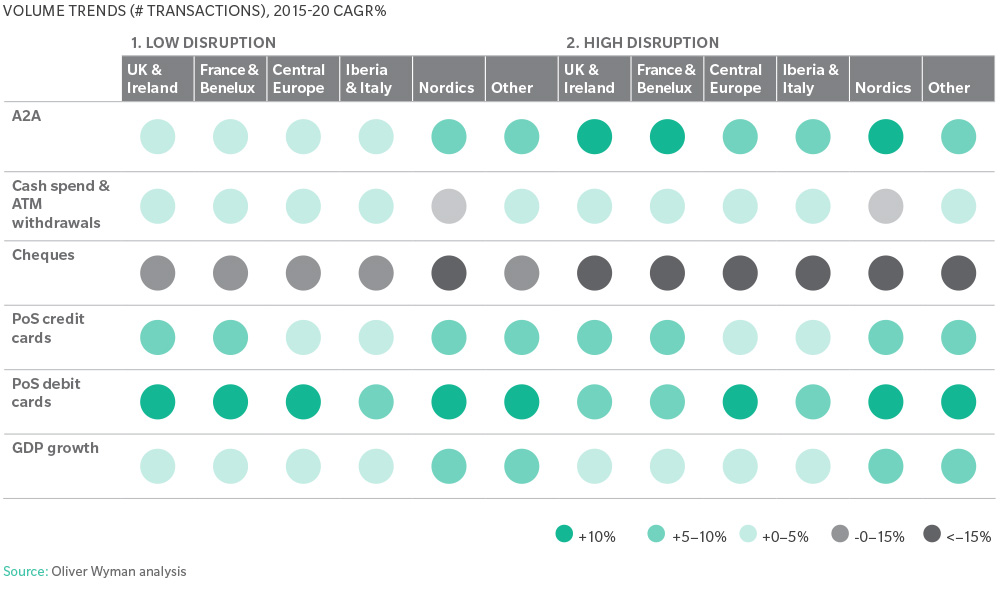The payments market is undergoing unprecedented changes, and our report covers a number of trends and detailed analysis of revenue pools. The report investigates all major payments instruments and types, including cards, accountto- account (A2A), cheques, and cash, both for retail (person-to-person (P2P) and person-to-business (P2B)), and business (business-to-business (B2B) and business-to-person (B2P)). Remittances, wholesale transfers, transfers among banks, and cross-border payments beyond Europe have been excluded. We have categorised the 28 countries covered across Europe into six payments markets, based on the structure and maturity of the payments infrastructure – for example, United Kingdom and Ireland (UK&I), Central Europe, France and Benelux, Southern Europe, the Nordic states, and other European Union (EU) countries.
We believe the European payments market revenue pools currently amount to approximately €38 billion, covering a total of €190 trillion worth of transactions across a number of payments methods (including cash and fee income across all channels). Overall, we expect the market to continue to grow until 2020 at a year-over-year rate of around 7 percent, driven by the growth in overall payments volumes (across both mature and less mature markets), as well as the growth of new types of payments, such as A2A. We forecast very modest reductions in margins on existing payments types, but do expect the substitution of existing revenue streams by new forms of payments, such as the debit equivalent for A2A.
Overview of EU payments markets
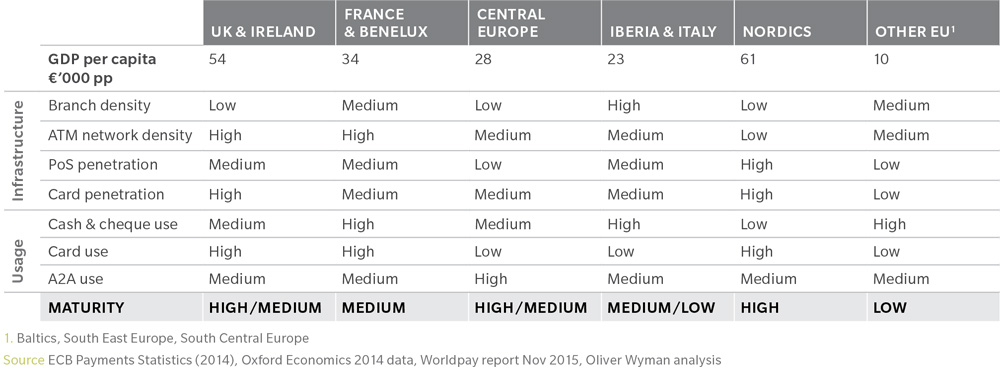
Overview of historical payments activity across EU markets
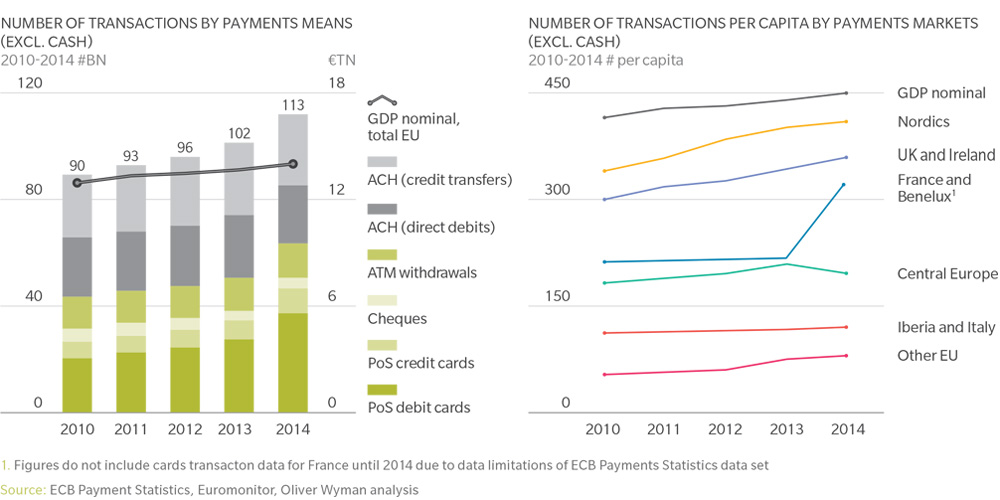
PISP circumventing cards payment rails
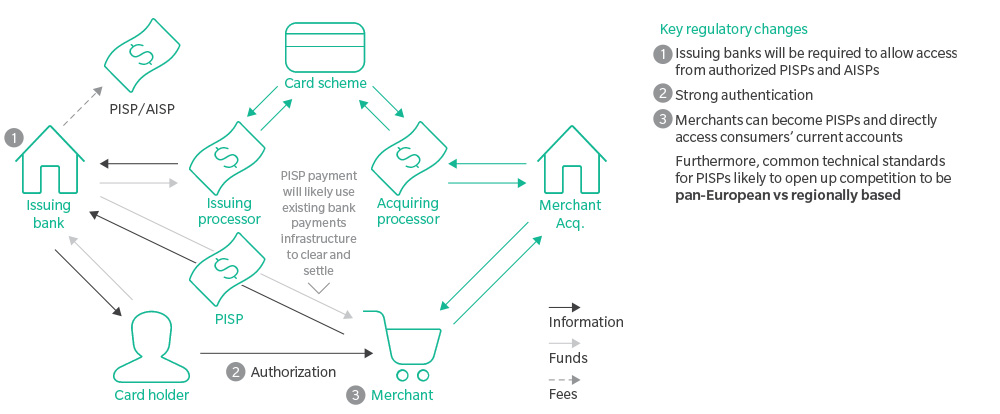
Schematic of supply side dynamics
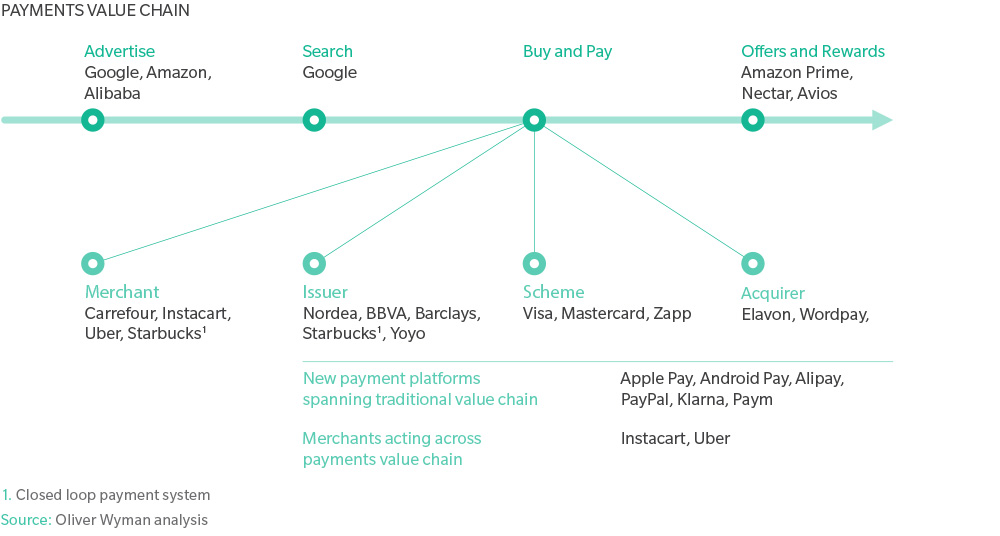
Factors influencing use of contactless payments
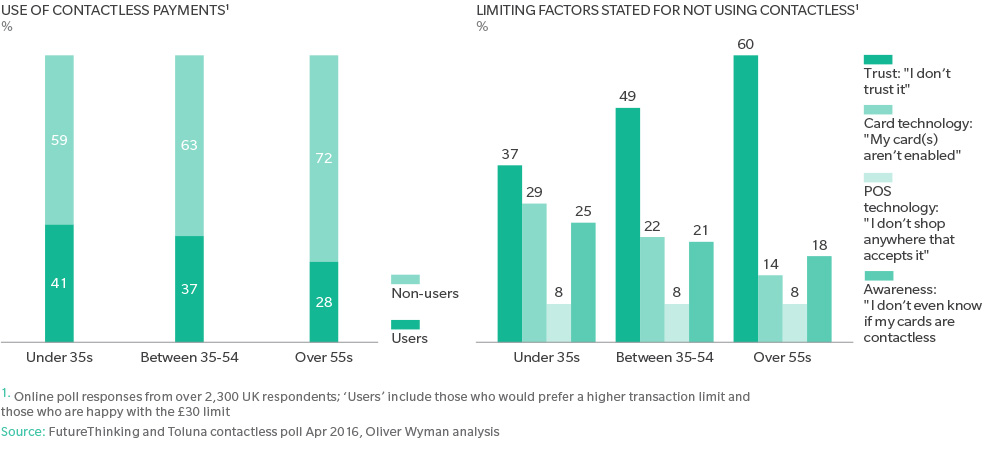
Impact assessment on payment volumes
